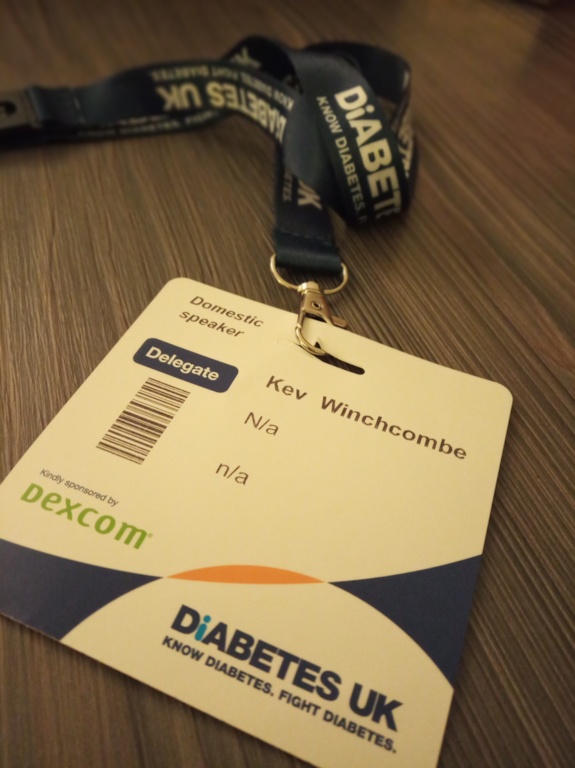 “We’re thinking of running a DIY looping Hot Topic at the professional conference” the Diabetes UK Director told me, “and we’ll ask (Dr) Emma (Wilmot) to run it”. (A Hot Topic is usually quite a short session of 15 minutes or less.)
“We’re thinking of running a DIY looping Hot Topic at the professional conference” the Diabetes UK Director told me, “and we’ll ask (Dr) Emma (Wilmot) to run it”. (A Hot Topic is usually quite a short session of 15 minutes or less.)
“Hi Emma, just a quick message to say xxxxx told me about your possible Hot Topic session at DUKPC. If you need any clean images for presentations I’ve got a fair few…” I tweeted privately.
[a few weeks passed]
Emma’s email arrived. “I am delighted to report that DUK are keen to include a dedicated session on OpenAPS at DUK…I was hoping you would be agreeable to presenting at this session”
*gulp*
Oh heck.
Yes.
Absolutely Yes.
From little acorns…
I was really pleased that the topic was a Hot Topic, let alone become a dedicated session, let alone that I’d get to present alongside my friend and utterly-brilliant-and-selfless-and-tireless-looping-support-guy Alasdair, alongside Dr Emma Wilmot and Dr May Ng, in a session chaired by Dr Partha Kar. Not only this, but the session was designed so that the patients (I’ll include me in that) got 30 minutes to present, the Doctors having 10 minutes each. This was a bit step forward in the DIY diabetes tech world.
Officially invited, this is happening
The official invite came, saying I could attend for whichever conference days I wanted, so without hesitation so with it being my first I chose all three.
I googled the venue and room plan, that’s good only about 50 seats, I’m cool with that. Either my googling failed me or someone realised they’d need a bigger boat room as this is what greeted me on Day 1. Even then, without an audience, I was getting heckled…by my friend Kelly.
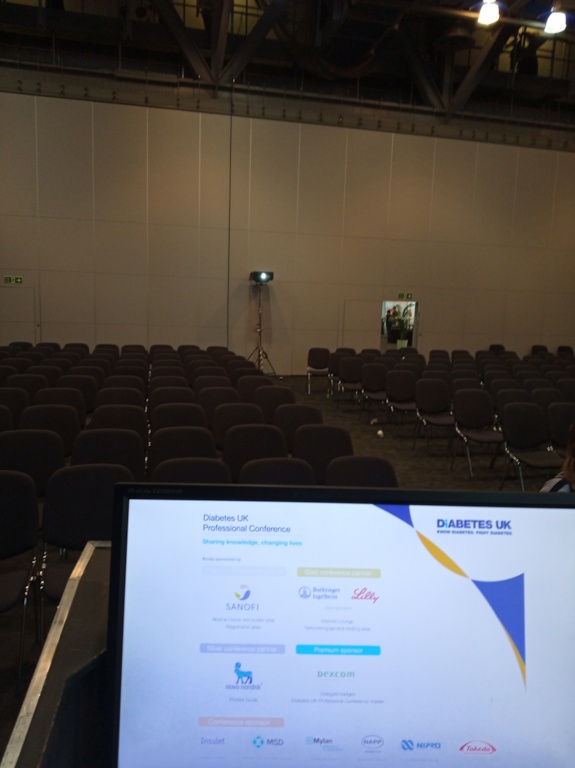
Prep, prep, prep
Alasdair and I spent weeks trying to make sure we got all the important points into our presentation, making sure it flowed nicely and made (as much) sense (as possible). Revisions came and went, slides got deleted, new ones added and finally we had it, version 11, although if I’m honest v11 went to v11f. Working together over Skype was easy, a very enjoyable experience, but I’m not sure who’s more finickity about fonts/spacing/lining-up, me or him….probably me though.
No backing out now
As the day arrived I had no nerves at all, it was bizarre, I always feel a little nervous before presenting. I spent the earlier part of the morning listening to the fantastic Ellie talk about her transition, a sad and frustrating story which I never knew, even though we’ve followed each other on Twitter for ages.
The crowd came in, the session started, the nerves hit full on and I forgot to say most of my first slide. Damn it, Alasdair looked so in control, I was anything but. By the end of the first slide I felt relaxed and in control. The mind’s a funny thing.
My favourite part of any of my recent presentations is when I play the 70 second time-lapse video of AndroidAPS doing it’s magic, first with Amy’s glucose using TBRs (temporary basal rates) and next with Alasdair’s using SMBs (supermicroboluses). I love telling the audience what they need to keep an eye out for, then pressing play and watching the jaws drop as they see how it performs and realise what a Godsend any system like this is.
We moved on to describe the three systems (Loop, OpenAPS, AndroidAPS), how things have moved on with the algorithms, how the HCPs could help and more. When my final slide appeared ‘Useful Resources’ a hundred hands were raised snapping a picture of all of the links, and as they did my four scheduled tweets (#1,#2,#3,#4) went out on Twitter too.
It was over. I was relieved and sad that it was over, but mostly relieved. We’d done a pretty good job I think.
Dr Wilmot’s and Dr Ng’s presentations were fabulous, hitting all the right points, and the Q&A afterwards was excellent, with some Doctors suggesting they couldn’t support such initiatives and others say how Doctors absolutely should support whatever their patients are doing.
Within seconds of the session finishing Dana M Lewis messaged Alasdair and me to congratulate us, even though she was miles away, that was a nice touch.
Our presentation photos and slide deck
Thanks to Joanne Cura who took photos of virtually every slide so you get to see most of our presentation.
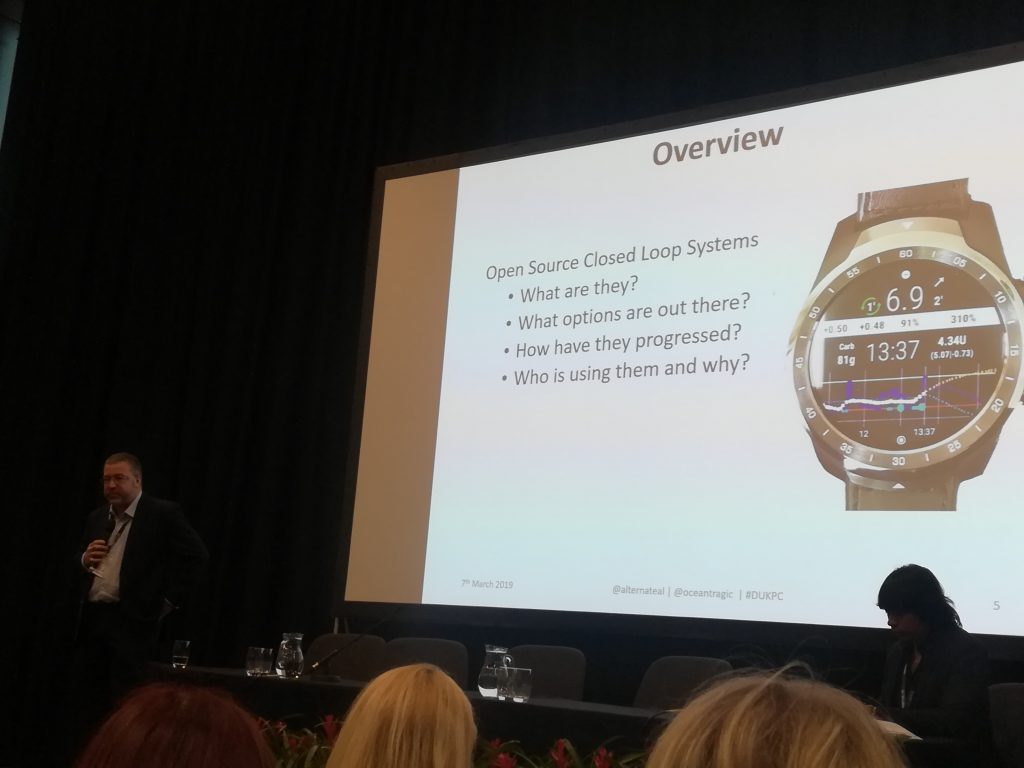
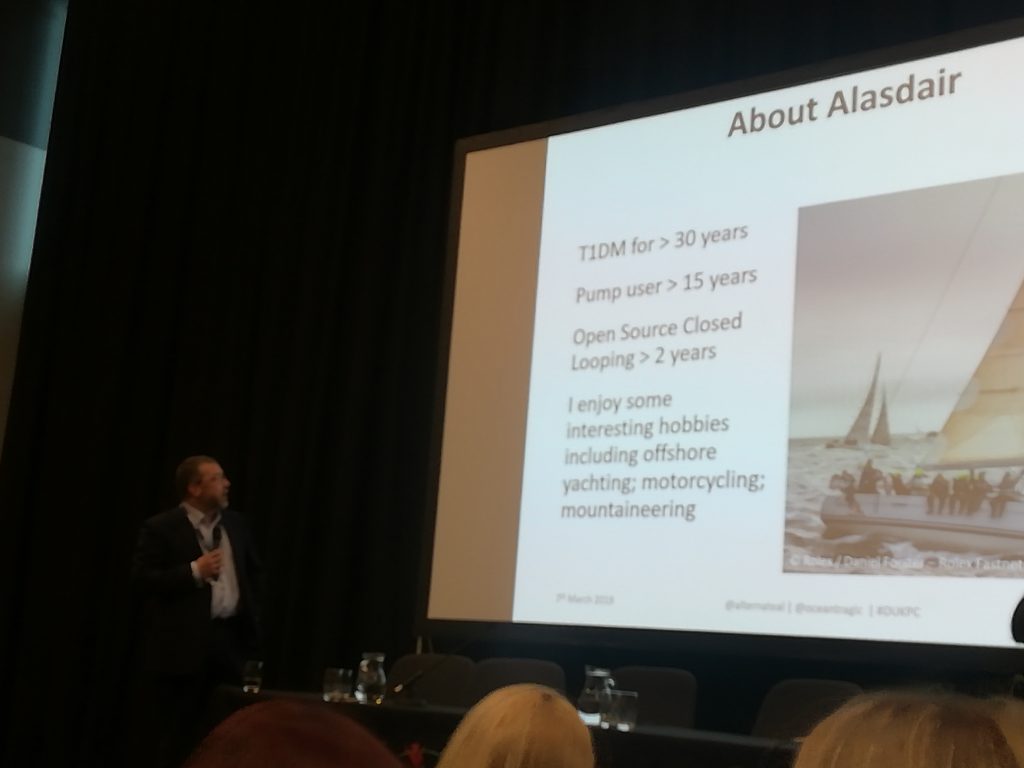
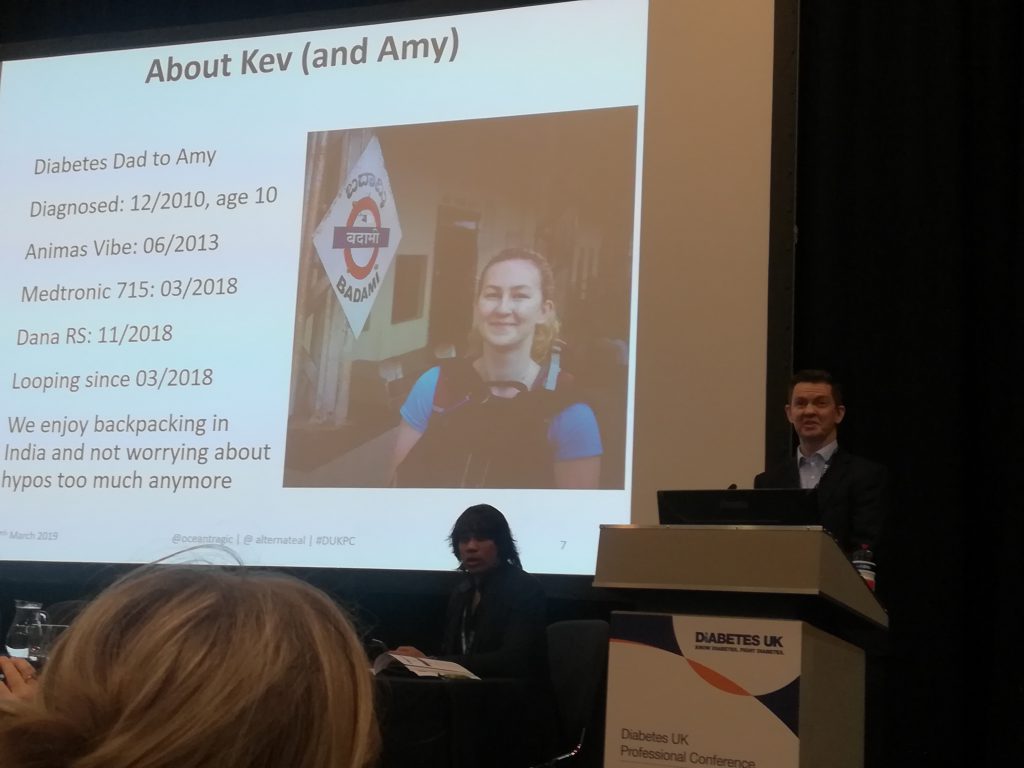





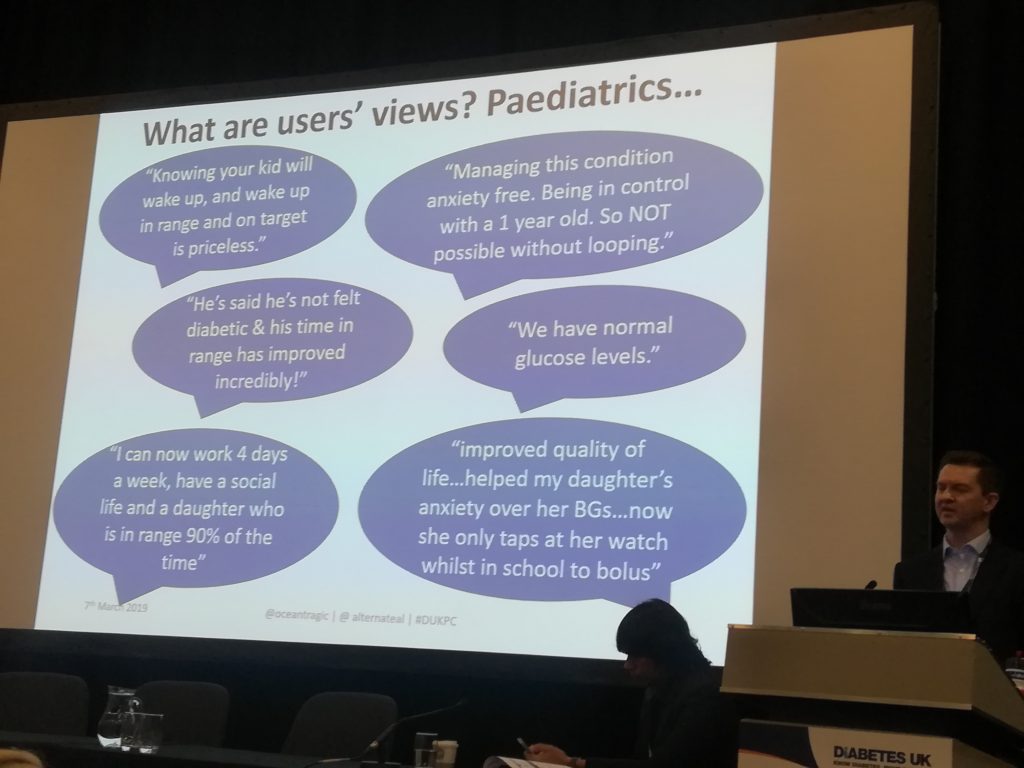
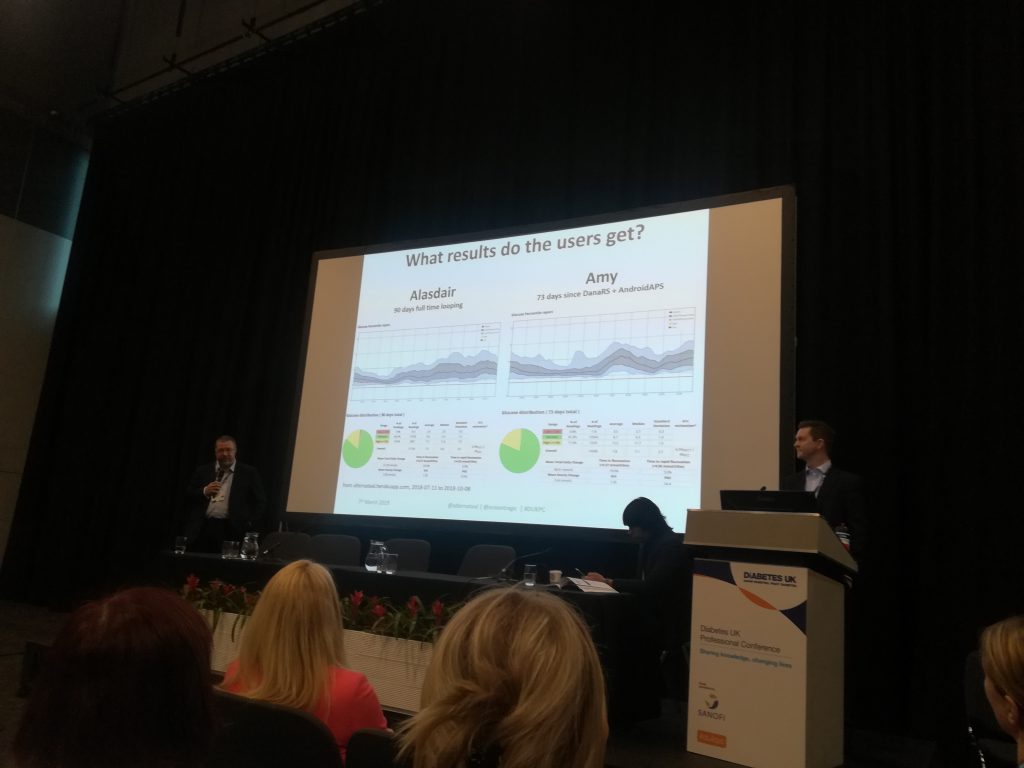


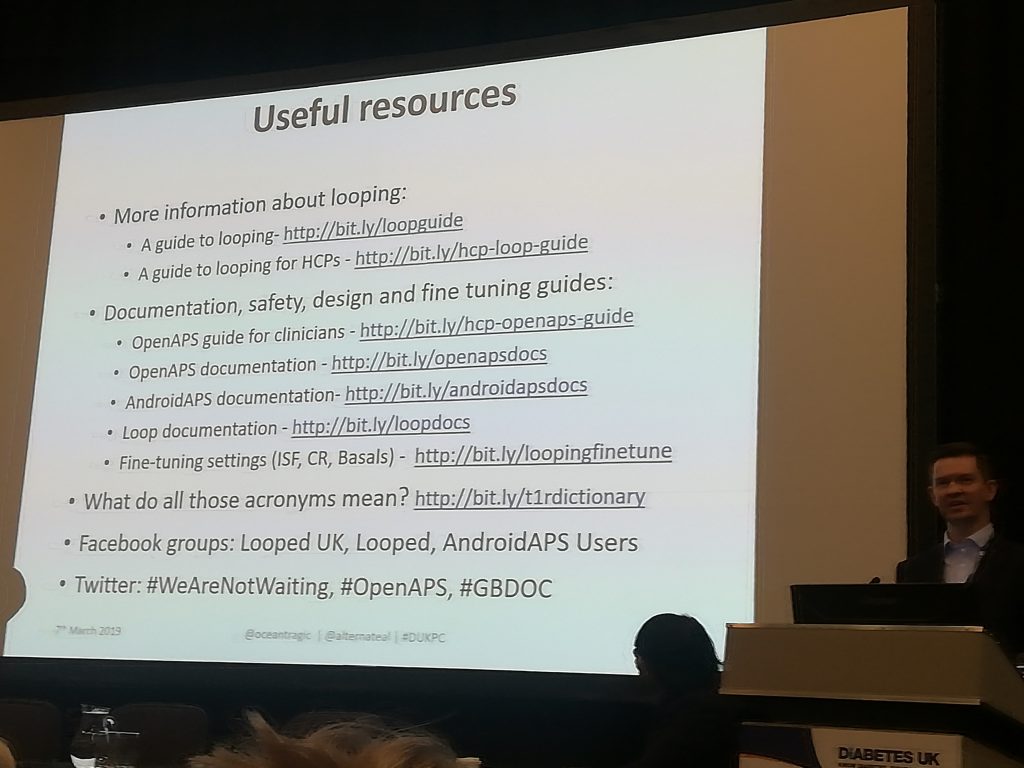
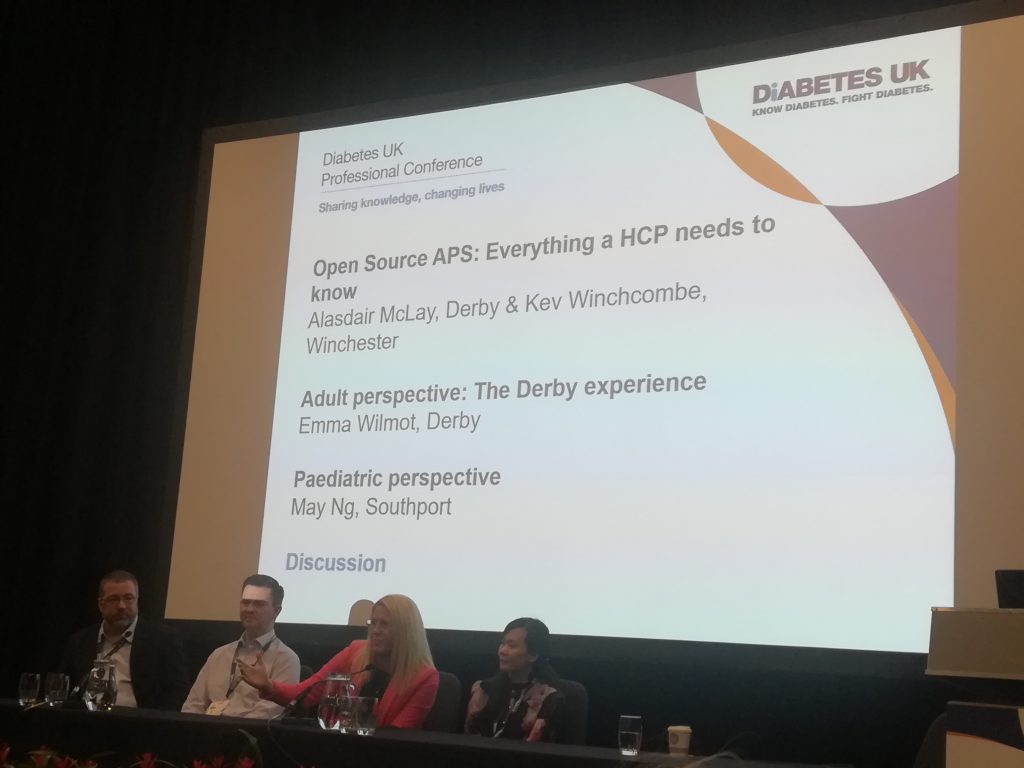
Checking the feedback
Many presenters say never to look at the feedback but for me it’s important, otherwise how can you assess if you need to change anything for next time?
I didn’t get to properly check Twitter for any chatter about the session until 1am, but these really made my day.
To have the honour of Diabetes UK’s Chief Executive, Chris Askew, attending our session when so many other great sessions were happening:
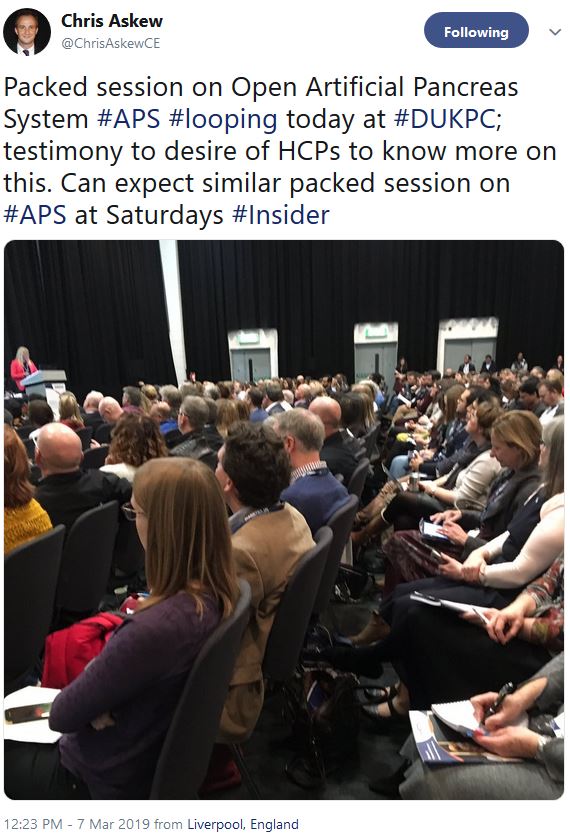
To the praise from Doctor’s who attended:

To the one which made all the efforts made by all involved so very worthwhile:

And it was nice to make the cut of the conference summary video too.


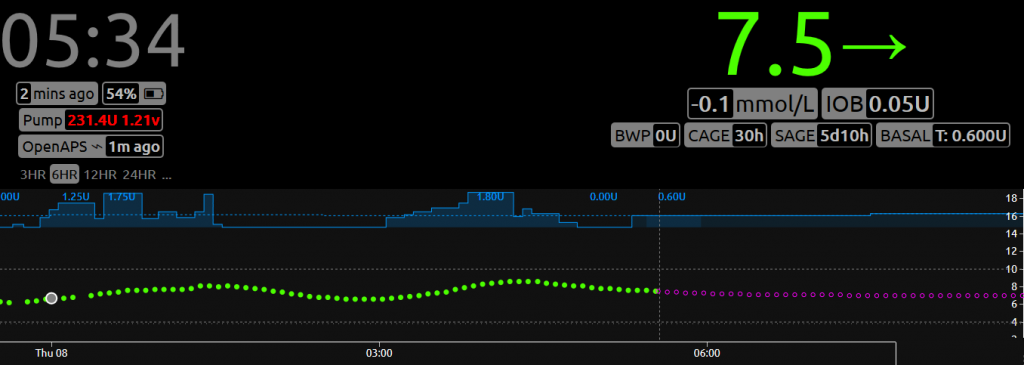
 It still wasn’t the right time for Amy, so I waited, applied no pressure and just hoped one day she’d ask to use it.
It still wasn’t the right time for Amy, so I waited, applied no pressure and just hoped one day she’d ask to use it.